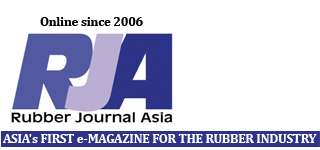Germany’s Freudenberg Sealing Technologies says it has developed new chloroprene rubber compounds that require no ethylene thiourea (ETU) as an accelerator, while still meeting strict requirements of the automotive industry.
Using ETU as an accelerator in the vulcanisation of chloroprene rubber is standard in the industry. Products with this accelerator have been used successfully for decades and show good values in terms of low-temperature flexibility as well as the required resistance to media such as greases and lubricants. Due to the risk of reproductive toxicity and its damaging effect on fruit, however, ETU should no longer be used if its omission is technically and economically feasible.

This is why Freudenberg has developed new elastomer compounds that require no ETU accelerator in the manufacture of products made of chloroprene rubber. One of the company’s successful applications of ETU-free products in the automotive sector is in sealing bellows for joint seals in tie rods, control arms and wishbones. They protect the moving parts from external influences and the leakage of lubricants.
For the specialists at Freudenberg, the challenge lay in eliminating ETU and other harmful accelerators, such as the additional use of tetramethylthiuram disulphide, and also in reconciling this with the increased requirements placed on new compounds. In addition to the most efficient vulcanisation possible, these include three key requirements that influence each other: significant low-temperature flexibility after targeted aging, compatibility with greases and lubricating additives in direct contact with the sealing bellows, and resistance to hydrolysis.
Another goal was to bring the compound optimisation into conformity with current and future customer requirements. The specialists at Freudenberg succeeded in launching new compounds into series production.
In addition to the statistical design of experiments, failure analysis, and optimisation of mixing processes, the methods used in the compound development included thermal analyses such as differential scanning calorimetry. This is used to determine key parameters such as the melting and crystallisation temperature, relaxation, glass transition temperature and degree of vulcanisation.
According to Freudenberg, the measurements have shown that one of the most important requirements, for example – behaviour in the low temperature range – is being met well. This is also confirmed by feedback from customers in the automotive sector that are already using ETU-free sealing bellows for joint seals in tie rods, control arms and wishbones. They confirm that the new material has much more stable values at low temperatures than other products on the market – which is a significant benefit when used continuously. After artificial aging in water and relevant greases, other parameters such as tensile strength and elongation at break are also within the requirement specifications. This was verified after the corresponding preconditioning with 7 days at 70°C in grease, 10 days at 80°C in water and 48 hours in 70°C hot air.
Another advantage offered by the new elastomer compound is the reduction in administrative work. Since the beginning of 2021, a reporting obligation in the SCIP database of the European Chemicals Agency ECHA has been in effect for all products containing specific quantities of Substances of Very High Concern. This applies to the entire supply chain from the manufacturer to the end customer, which makes it complex.
Thanks to the new development, the additional reporting requirement is eliminated, and the reporting can be carried out as before via the existing and globally standardised exchange and international material data system.
